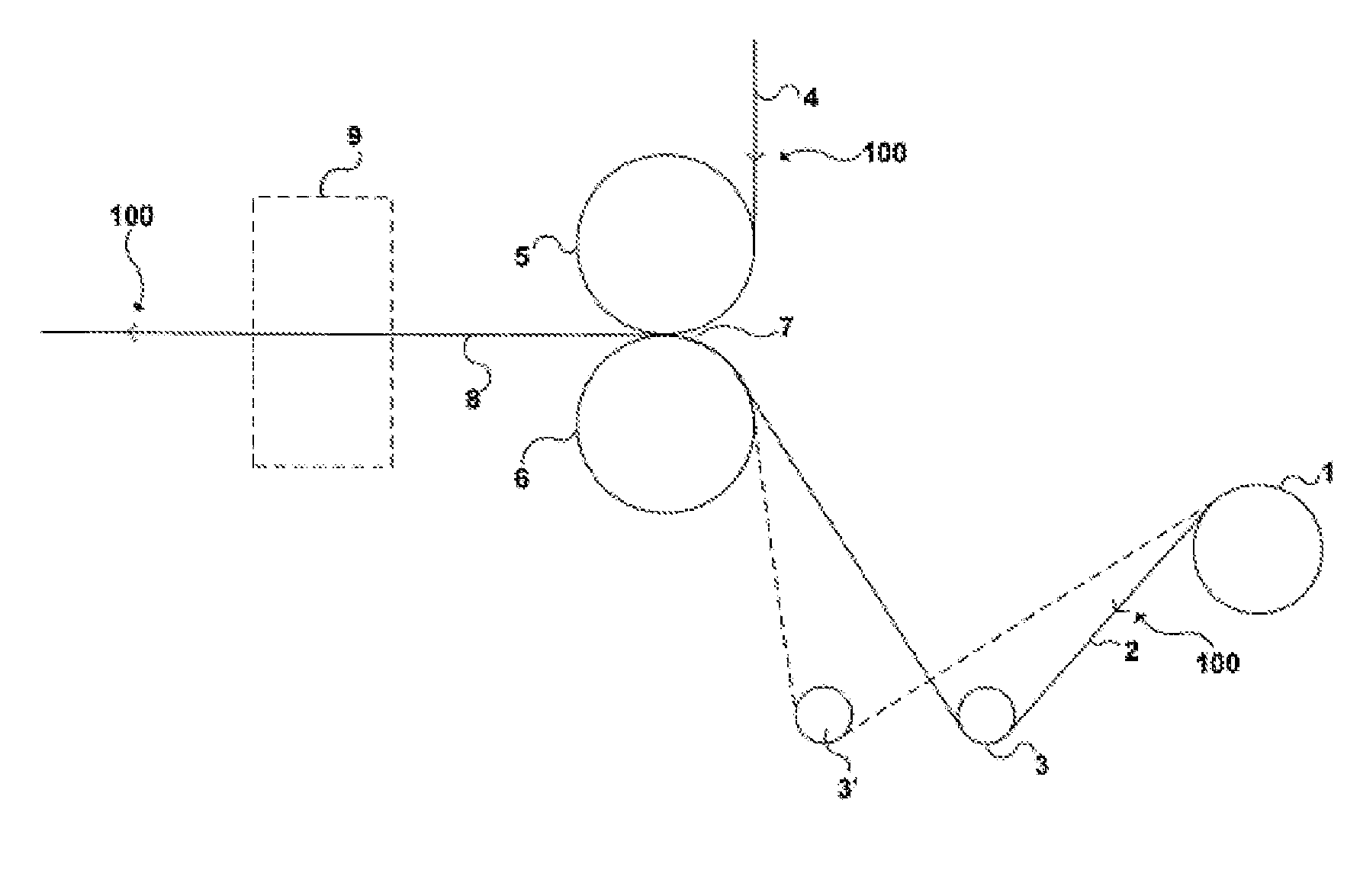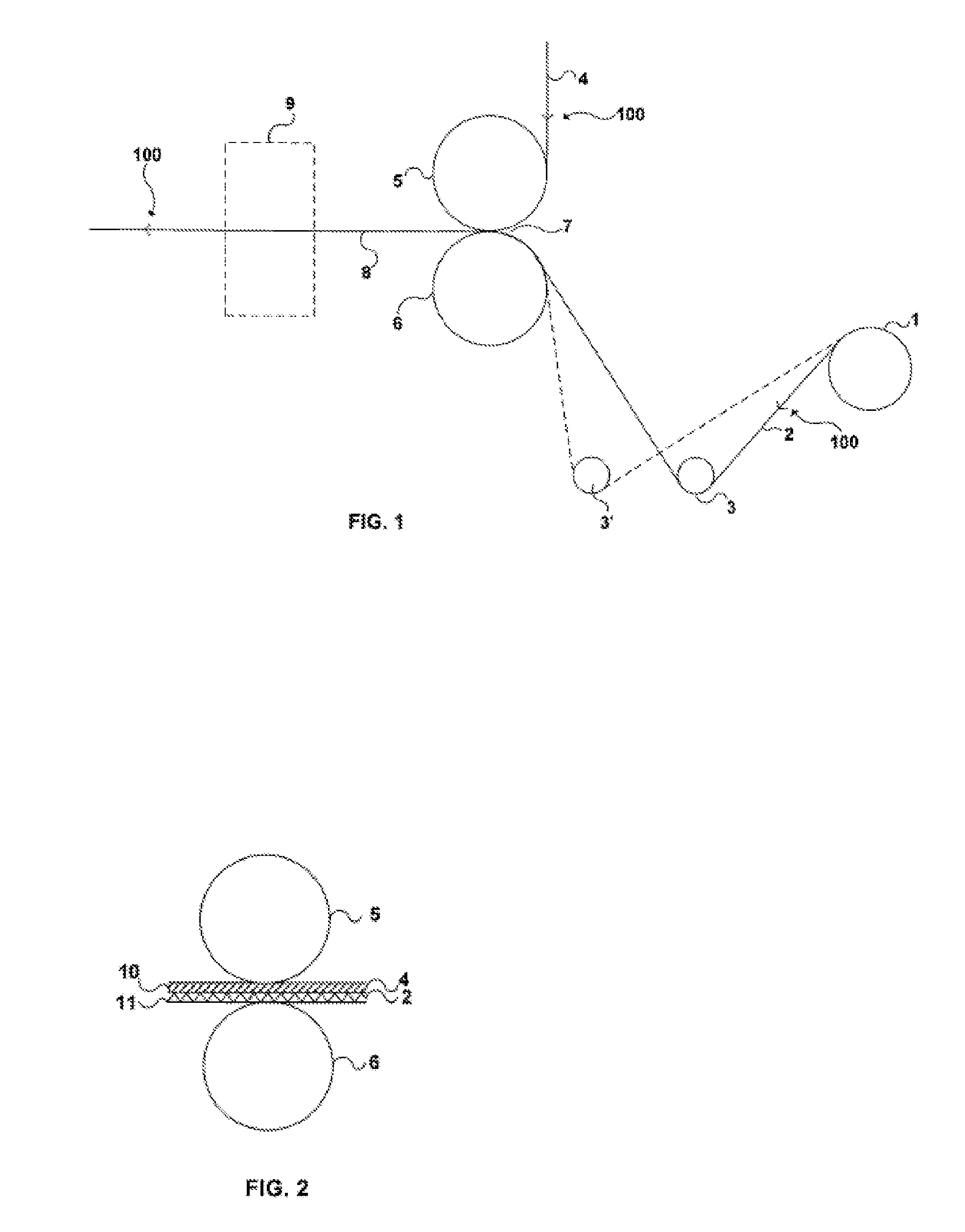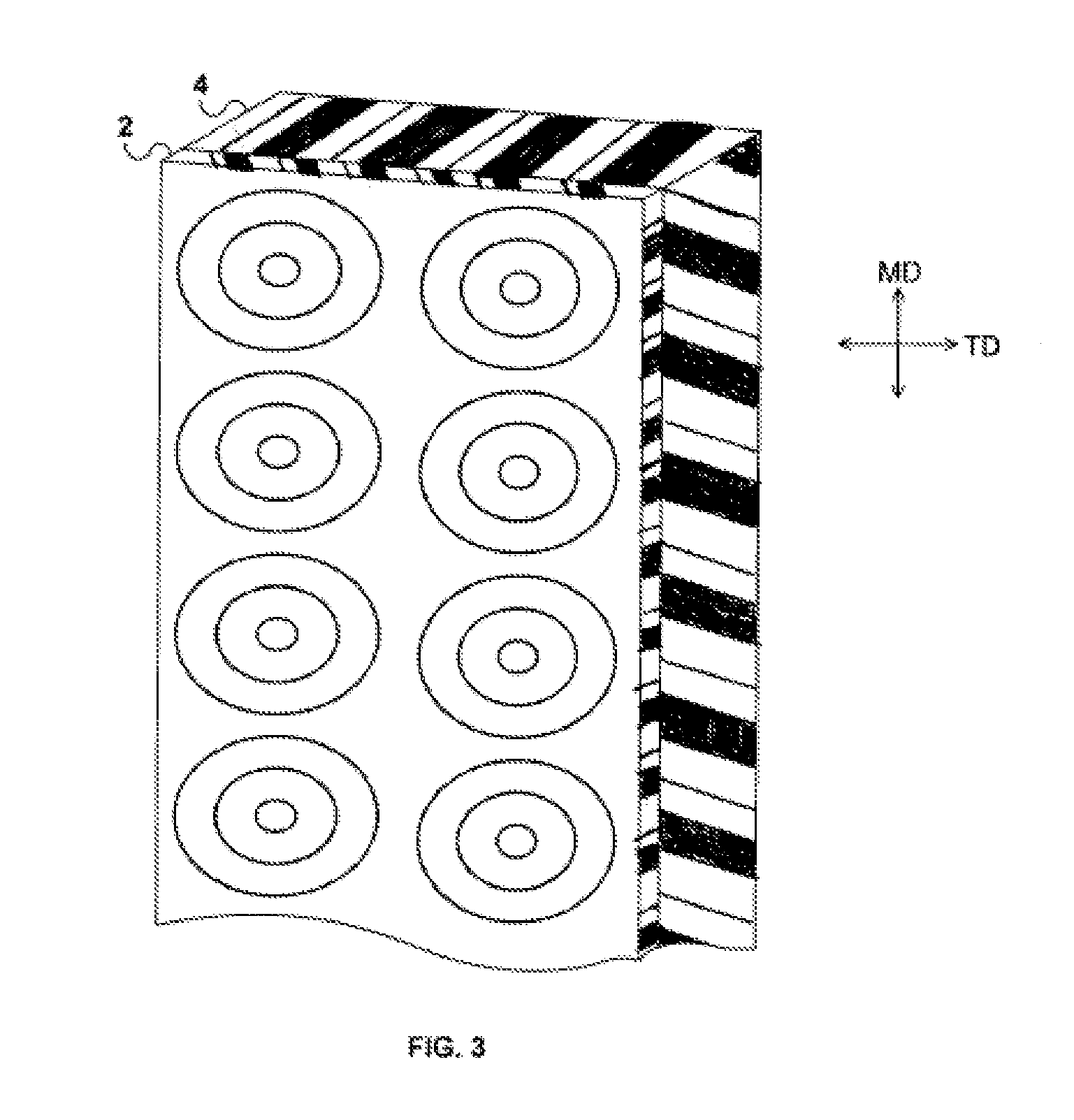Continuous lamination of polymethylemethacrylate (PMMA) film in the manufacture of a fresnel lens
a technology of polymethylemethacrylate and fresnel, which is applied in the direction of solar-ray concentration, paper/cardboard containers, electrical equipment, etc., can solve the problems of introducing more cost to the final product, affecting the quality of fresnel films, etc., to achieve the effect of simple and inexpensive fabrication
- Summary
- Abstract
- Description
- Claims
- Application Information
AI Technical Summary
Benefits of technology
Problems solved by technology
Method used
Image
Examples
example 1
[0031]A modified acrylic film with an embossed pattern of multiple, circular Fresnel lenses was laminated to a semi-molten acrylic polymer sheet. The film was a product of the 3M Company of Minneapolis Minn. The embossed film was supplied on a roll and was fed from the roll into a nip point of a pair of calendar rolls. The polymer sheet was formed using conventional sheet extrusion process. The acrylic sheet to which the film was being laminated was 3 mm thick and had a surface temperature of 148° C. to 150° C. at the point of lamination. The gap between the pair of calendar rolls was adjusted to provide enough pressure to assure that the applied film had complete contact with the acrylic polymer at the point of operation. It is important to keep the temperature of the embossed surface below its glass transition temperature to maintain the sharpness of the embossed pattern. The ratio of the speed of the last roll and the haul-off rolls was maintained to a ratio of 0.980 to 1.00 to k...
example 2
[0032]The process was the same as disclosed in Example 1, except that a continuous linear Fresnel pattern was embossed into the film being applied to the sheet being formed.
example 3
[0033]The base extruded polymer sheet was formed by co-extrusion of an acrylic based polymer, with a lower softening temperature than the core polymer, on one or both sides of the sheet. This allowed the surface of the sheet to be softer and when pressure was applied to the laminating film, the softer polymer was able to flow to the areas of lower pressure and fill gaps between the film and the substrate sheet providing better adhesion. The remaining set up was the same as Example 1.
PUM
| Property | Measurement | Unit |
|---|---|---|
| thickness | aaaaa | aaaaa |
| thickness | aaaaa | aaaaa |
| surface temperature | aaaaa | aaaaa |
Abstract
Description
Claims
Application Information
 Login to View More
Login to View More - R&D
- Intellectual Property
- Life Sciences
- Materials
- Tech Scout
- Unparalleled Data Quality
- Higher Quality Content
- 60% Fewer Hallucinations
Browse by: Latest US Patents, China's latest patents, Technical Efficacy Thesaurus, Application Domain, Technology Topic, Popular Technical Reports.
© 2025 PatSnap. All rights reserved.Legal|Privacy policy|Modern Slavery Act Transparency Statement|Sitemap|About US| Contact US: help@patsnap.com



